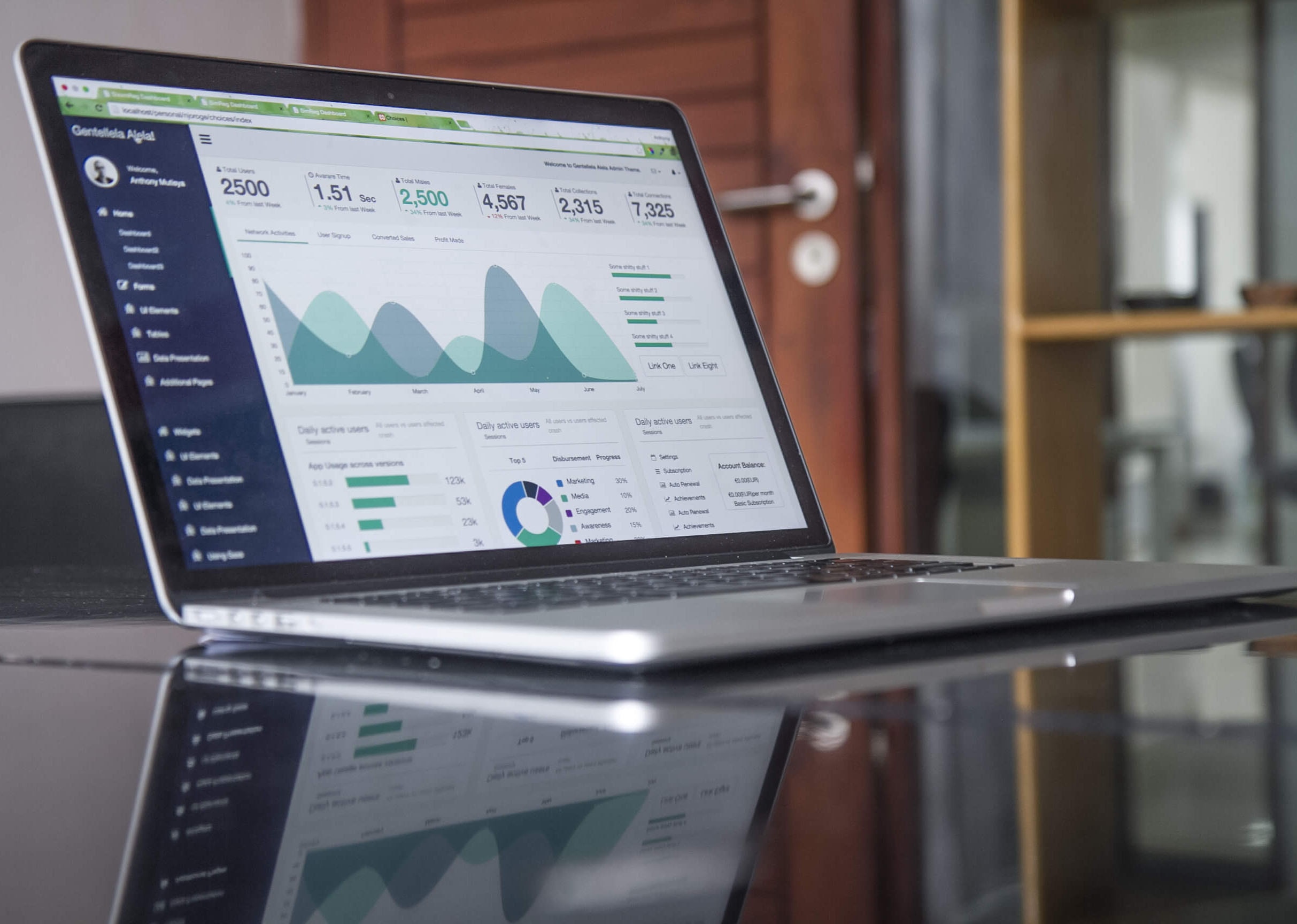ROAS (return on ad spend) has often been the industry standard for measuring campaign success and the guiding light when it comes to optimising spend. However, a reliance on ROAS (especially last click) causes short term thinking and poor decision making. In any other circumstance than to test, it could be your red tape when it comes to revenue growth.
Understanding ROAS.
Return on ad spend (ROAS) is a calculated ratio which determines how much revenue you are generating from each pound, dollar or euro your brand is spending on advertising. In theory, it provides a clear picture of whether a campaign is successful and worth the money you put into it.
The formula for calculating ROAS is pretty straightforward:
Revenue / Spend
Now, let's take a look at last click ROAS in particular. Last click ROAS means that 100% of the revenue generated by a specific channel is attributed to the last click of the purchase journey. This can be a tricky attribution model when it comes to reporting as it doesn't acknowledge any previous engagement along the purchase journey. For instance, a consumer is served several ads on Instagram and then chooses to Google the brand to make a purchase. They click on a Google ad and make their purchase. With a last click model, 100% of the revenue will be attributed to the Google Ad campaign even though the Instagram ads were the main driver to purchase.
What decision would you make if you had to cut budget the next month? Based on this reporting, you would cut Paid Social budget as no/very little revenue is being attributed against it. But then what would push your consumers to purchase? Nothing. Therefore your revenue growth would suffer.
This example is just one of the ways that ROAS can trick marketers into showing what is working and what isn't.
ROAS Has Become An Inaccurate Representation.
So we've already looked at one example where ROAS can be inaccurate. But let's explore some other scenarios we often see which could be limiting revenue growth.
Using ROAS to determine budget optimisation
If your campaigns are organised by location, you will be greeted with a range of ROAS for each country or region. You can use this ROAS, after a period of testing, to see whether it is worth advertising in that specific country. However, as always, this cannot be used as gospel.
Example:
A brand selling luxury luggage is running campaigns in the UK, US, Germany, France and Sweden. Each location has its own budget with the majority being split between the UK and the US.
ROAS for each country:
UK = 3.5:1
US = 4:1
Germany = 3:1
France = 4.6:1
Sweden = 8:1
Looking at these figures in isolation would suggest increasing budget for Sweden as the ROAS is the highest and most yielding. What we can't see is that Sweden only had a budget of £1000 across the month and it took just 2 purchases to achieve at 8:1 ROAS.
The reason Sweden only had a budget of £1000 is because the brand was aware, after extensive market research, that there is not a huge market for their product in Sweden You could increase budget in this region, only to hit a plateau or even negative returns.
ROAS vs Revenue
Using the same example, let's dig a little deeper.
We already know that Sweden's 8:1 ROAS has been generated from £1000 worth of budget.
8:£1000 = £8000. Minus the investment equals a gross revenue of £7000.
US yielded a 4:1 ROAS with a budget of £9000.
4:£9000 = £36000. Minus the investment equals a gross revenue of £27000.
Some marketers will look at ROAS and think that the US is underperforming but it actually generated £20k more revenue that the Sweden campaign.
It is inevitable that as you increase marketing spend, your ROAS will reduce. So a undying focus on ROAS alone will stifle growth. Marketing directors should be looking at gross revenue and incremental profit increases to determine campaign success and leave analysing ROAS to their marketing team or agency. They will be much more attuned to the nuances and contexts around these smaller, less significant metrics.
ROAS (return on ad spend) has often been the industry standard for measuring campaign success and the guiding light when it comes to optimising spend. However, a reliance on ROAS (especially last click) causes short term thinking and poor decision making. In any other circumstance than to test, it could be your red tape when it comes to revenue growth.
Understanding ROAS.
Return on ad spend (ROAS) is a calculated ratio which determines how much revenue you are generating from each pound, dollar or euro your brand is spending on advertising. In theory, it provides a clear picture of whether a campaign is successful and worth the money you put into it.
The formula for calculating ROAS is pretty straightforward:
Revenue / Spend
Now, let's take a look at last click ROAS in particular. Last click ROAS means that 100% of the revenue generated by a specific channel is attributed to the last click of the purchase journey. This can be a tricky attribution model when it comes to reporting as it doesn't acknowledge any previous engagement along the purchase journey. For instance, a consumer is served several ads on Instagram and then chooses to Google the brand to make a purchase. They click on a Google ad and make their purchase. With a last click model, 100% of the revenue will be attributed to the Google Ad campaign even though the Instagram ads were the main driver to purchase.
What decision would you make if you had to cut budget the next month? Based on this reporting, you would cut Paid Social budget as no/very little revenue is being attributed against it. But then what would push your consumers to purchase? Nothing. Therefore your revenue growth would suffer.
This example is just one of the ways that ROAS can trick marketers into showing what is working and what isn't.
ROAS Has Become An Inaccurate Representation.
So we've already looked at one example where ROAS can be inaccurate. But let's explore some other scenarios we often see which could be limiting revenue growth.
Using ROAS to determine budget optimisation
If your campaigns are organised by location, you will be greeted with a range of ROAS for each country or region. You can use this ROAS, after a period of testing, to see whether it is worth advertising in that specific country. However, as always, this cannot be used as gospel.
Example:
A brand selling luxury luggage is running campaigns in the UK, US, Germany, France and Sweden. Each location has its own budget with the majority being split between the UK and the US.
ROAS for each country:
UK = 3.5:1
US = 4:1
Germany = 3:1
France = 4.6:1
Sweden = 8:1
Looking at these figures in isolation would suggest increasing budget for Sweden as the ROAS is the highest and most yielding. What we can't see is that Sweden only had a budget of £1000 across the month and it took just 2 purchases to achieve at 8:1 ROAS.
The reason Sweden only had a budget of £1000 is because the brand was aware, after extensive market research, that there is not a huge market for their product in Sweden You could increase budget in this region, only to hit a plateau or even negative returns.
ROAS vs Revenue
Using the same example, let's dig a little deeper.
We already know that Sweden's 8:1 ROAS has been generated from £1000 worth of budget.
8:£1000 = £8000. Minus the investment equals a gross revenue of £7000.
US yielded a 4:1 ROAS with a budget of £9000.
4:£9000 = £36000. Minus the investment equals a gross revenue of £27000.
Some marketers will look at ROAS and think that the US is underperforming but it actually generated £20k more revenue that the Sweden campaign.
It is inevitable that as you increase marketing spend, your ROAS will reduce. So a undying focus on ROAS alone will stifle growth. Marketing directors should be looking at gross revenue and incremental profit increases to determine campaign success and leave analysing ROAS to their marketing team or agency. They will be much more attuned to the nuances and contexts around these smaller, less significant metrics.





